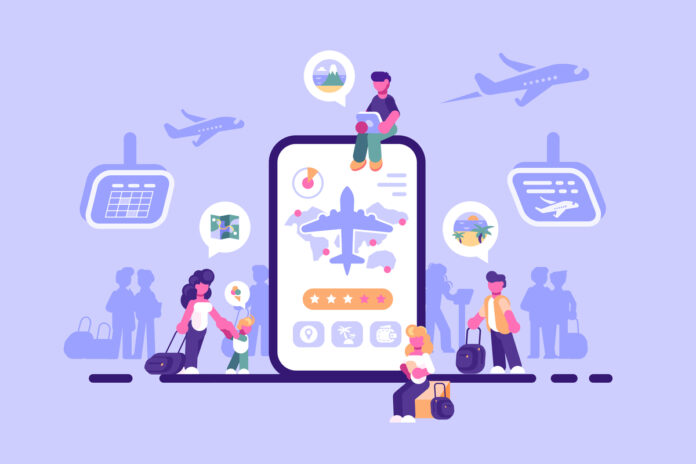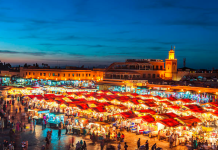When we talked about promoting tourism, it was that opportunity of being able to be at ITB Berlin or WTM London. It was about physically being there with brochures, like selling your wares at the weekend market or village haat. People swing by your stall; you try to sell your wares based on the promo materials you have, and then rely on them to be able to send you a group of tourists.

The digital world has brought about many disruptions. You can book your tickets, hotels, tours and everything you would like to do online. Portals like Trip Advisor give you reviews to decide which destinations to look out for, and which products and services. The world of Instagram and TikTok has allowed you to view destinations, products and services from people you believe in and created tremendous peer pressure. Then there are internet entertainment platforms like Netflix where you can, apart from movies and innumerable series, gain access to many high quality documentaries and other materials that can make you think about different destinations you have never dreamt about.
New dimension
The last decade has changed how people view travel and choose what and where they eat, drink or carry out leisure activities. The pandemic has also added a new dimension where people travelled virtually during times of lockdown and restricted movements, and made some bucket lists for physical trips. Of course, there are the influencers, anyone with a device who can show you a whole new world you have never imagined.
In Kathmandu, with diverse speakers at a Neftalk organised by the Nepal Economic Forum, we discussed what is happening to tourism in the digital era and explored the disruptions and opportunities. There are three things to look out for.
First, there are new mediums that drive people’s travel decisions. For instance, the success of 14 Peaks: Nothing Is Impossible, a Netflix production with Nims Purja climbing all 14 eight-thousanders, triggered the imagination of many people, which was reflected in tourist arrivals to Nepal. Globally, people who have watched local content are 2.4 times more likely to make the place their #1 travel destination. Similarly, the video around the visit of the Prince of Bahrain and a vlogger from Qatar during the pandemic has let people in the Middle East who thought of Europe and the United States as premium destinations start to think about Nepal. At a luxury hotel in Pokhara, I was asked by a couple from the United Arab Emirates as to why we do not have $1,500 a night hotels as there would be lots from their country who would be interested.
Second, domestic tourism, which has been the bread and butter of many destinations in Nepal, has just exploded due to digital mediums. We hardly saw any sustained campaigns from any agency to lure local tourists, but then vloggers posting their bike ride videos on YouTube, Instagram and now TikTok have changed the fate of Nepali domestic tourism. People like Sisan Bainya have taken production quality seriously, and people want to follow him to the places he and his team have been.
Imagine Nepal is capturing such imagination of Nepali travellers. With a diaspora population of over 5 million, excluding India, across 180 countries, we will see a considerable demand surge from Nepalis visiting for religious or social purposes or just embarking on pure fun! For the domestic tourists, with the easing of payments through digital platforms, it’s all digital. Be it finding a destination, making bookings, paying for it, writing reviews and then posting about your trip. With more women joining the workforce, nuclear families and the concept of holidays not being limited to playing cards and drinking will significantly increase domestic tourism growth.
Third, the biggest challenge for Nepal to manage would be to ensure tourism has sustainable growth. The littering of trekking trails with cans of alcoholic beverages, bottles of aerated drinks and many other packaging materials is a huge issue. Structures are mushrooming everywhere to house travellers without proper planning. Everest is a golden goose we are killing by selling it too cheap. We have to think of the destination as super high-end. With a fragile ecology and biodiversity, we need to conserve; we need to use the same digital platforms to spread messages on pushing sustainable tourism. We have the commitments we made at COP26 to remember and the government’s Green Resilient Inclusive Development Action Plan to bear in mind.
Virtual reality
Finally, we need to prepare for tourists who will want to get to Nepal without actually getting to Nepal. With virtual reality and augmented reality becoming the future, with the Metaverse becoming the future real estate, we need to be there. We need to exploit these platforms to attract more people coming in person. We need to create that buzz of a destination that people will yearn to visit as we are one of the most photogenic countries in the world.
For all this to be leveraged, we need it to be private sector-led and come out of the shells of cartels, and we need the government to continue to provide a legislative and regulatory environment that facilitates these developments rather than thinking of stifling them in the name of controls. In many countries, governments have relied on self-regulation as a governance model. This is mainly due to the unique features of online content. Technology allows an individual to make an informed decision about how, when and what content they consume. We have missed many previous waves of disruptions, this one, we should not.













